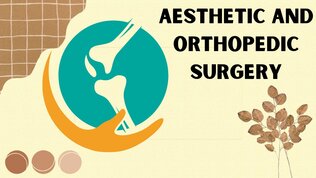Generally, orthopedic and aesthetic surgery is concerned with the reconstruction of the musculoskeletal system and facial features. It also deals with the reconstruction of the shape of the lower extremities.
The Capital Care provides Aesthetic and orthopedic surgery in Geneva at the forefront of medical technology and cosmetic surgery in Switzerland. Their team is made up of competent professionals, specialists in the exclusive practice of: cosmetic surgery, orthopedic surgery and energy care, with great expertise in support.
Reconstruction of Lower Extremity Defects
Various factors can affect the outcomes of lower extremity reconstruction. These include patient age, medical comorbidities, lack of private health insurance, smoking, social and psychosocial factors, and rehabilitation. Reconstruction of lower extremity defects in aesthetic and orthopedic surgery should be carried out by a multidisciplinary team. The goal of lower extremity reconstruction is to restore function, improve weight-bearing status, and maintain mobility. This is accomplished by re-establishing the soft tissue coverage and joints. There are many procedures available for joint reconstruction. These include replacement and arthroplasty. Other procedures are less common. Some of these include dual transfer of tendons, amputation, and microvascular techniques.
Lower extremity reconstruction is not as complicated as upper limb reconstruction. However, it requires an orthoplastic approach. The treatment algorithm should be patient-centered. In addition, it should be performed at a specialized center with the appropriate equipment and expertise. In addition, it is recommended that reconstructive surgeons understand the principles of orthopaedic surgery and microvascular techniques. The reconstructive surgeon should discuss fixation options with the orthopedic surgeon.
Reconstruction of the Shape of the Lower Extremities
Various forms of lower extremity reconstruction exist, but the primary goal is to provide a durable soft tissue reconstruction that allows the patient to resume their daily activities. Lower extremity reconstruction can also be used to treat neuropathy, peripheral vascular disease, malignancy, diabetes and other causes of decreased function. In the past, amputations were the primary method for treating such injuries. However, due to advances in orthopedic surgery and anaesthesia, limb salvage has become a viable option.
Lower extremity reconstruction has a major impact on the patient. It can change his or her life. The patient’s motivation and expectations are a vital aspect of the procedure. In addition, a good support system is also essential. A patient should be able to have an open discussion with his or her physician about the options available. This will help the patient make a more informed decision. A successful lower extremity reconstruction involves several stages. The first step is to assess the nature of the injury. This includes the size, shape, and location of the wound. This will help determine the best way to treat the wound. It will also help the physician determine if amputation or limb salvage is appropriate.
Reconstruction of the Face
Surgical reconstruction of the face can help a person with a facial injury look better. However, this procedure is invasive. It is important to use a surgeon who has experience in reconstructive surgery. This will help ensure that you have a complication-free procedure. Facial reconstruction can be performed in a hospital, outpatient surgery center, or a surgeon’s office. Your surgeon will perform a full history and physical examination to determine which procedure is best suited to your particular situation. The surgeon will also decide whether to use your own tissue or to use a prosthetic.
The procedure may involve some bruising and swelling, but it is considered a safe procedure. Recovery time will vary depending on the underlying damage to your face. However, you should be prepared to experience mild to moderate pain for a few days. Some areas of the face may require skin grafts. Flaps can be used to achieve optimal facial balance. However, flaps may not be effective in areas with large holes.
Reconstruction of the Musculoskeletal Apparatus
During orthopedic and aesthetic surgery, reconstruction of the musculoskeletal apparatus involves reconstructing bones and ligaments and is performed to restore the appearance and function of a limb. Various procedures are used to restore the musculoskeletal system, including cartilage, bones, ligaments, muscles, tendons, nerves, and skin. Upper extremity reconstructive surgery is used to treat patients with congenital deformities or to correct dysfunction caused by trauma, malignancy, infection, and degenerative diseases. These surgeries may involve reattaching bones or muscles, replacing tendons, or using implants. Some patients may require a combination of different techniques to achieve the best outcome.
A subtalar implant is a soft threaded titanium device that supports the arch of the foot and prevents the rolling of the ankle. Implanted prostheses can be more cosmetic and anatomically realistic, as well as offer better physical muscle-prosthesis attachment. However, they can also be more expensive. They also have a high rate of infection. Upper extremity reconstructive surgery is a difficult procedure, particularly after radiotherapy or preoperative radiotherapy. In addition to restoring function, reconstructive surgeries can also reduce the risk of complications like infection and pain.
